#190 Yellow-bellied Woodpecker
Audubon Havell Edition – Yellow-bellied Woodpecker
The Havell Edition is the original folio edition of Audubon’s work, and is the one for which Audubon is most famous. Often called the Double Elephant Folio edition (a reference to the size of the paper), this edition of The Birds of America was published in London from 1827 to 1838. The prints were made on one of two types of paper, from mills that used similar watermarks (J Whatman or J Whatman Turkey Mill). J Whatman watermarks are found somewhat more towards the center of the paper, while the Turkey Mill watermark hugs the edge of the paper. The Havell prints are copper-plate etchings with engraving (mostly used for lettering) and aquatint (an etching technique involving the use of rosin that allows for much finer degrees of shading than basic etching). The edition was sold by subscription and plates were issued five at a time in “numbers.” Thus each plate shows the appropriate number on the left and the plate number on the right.
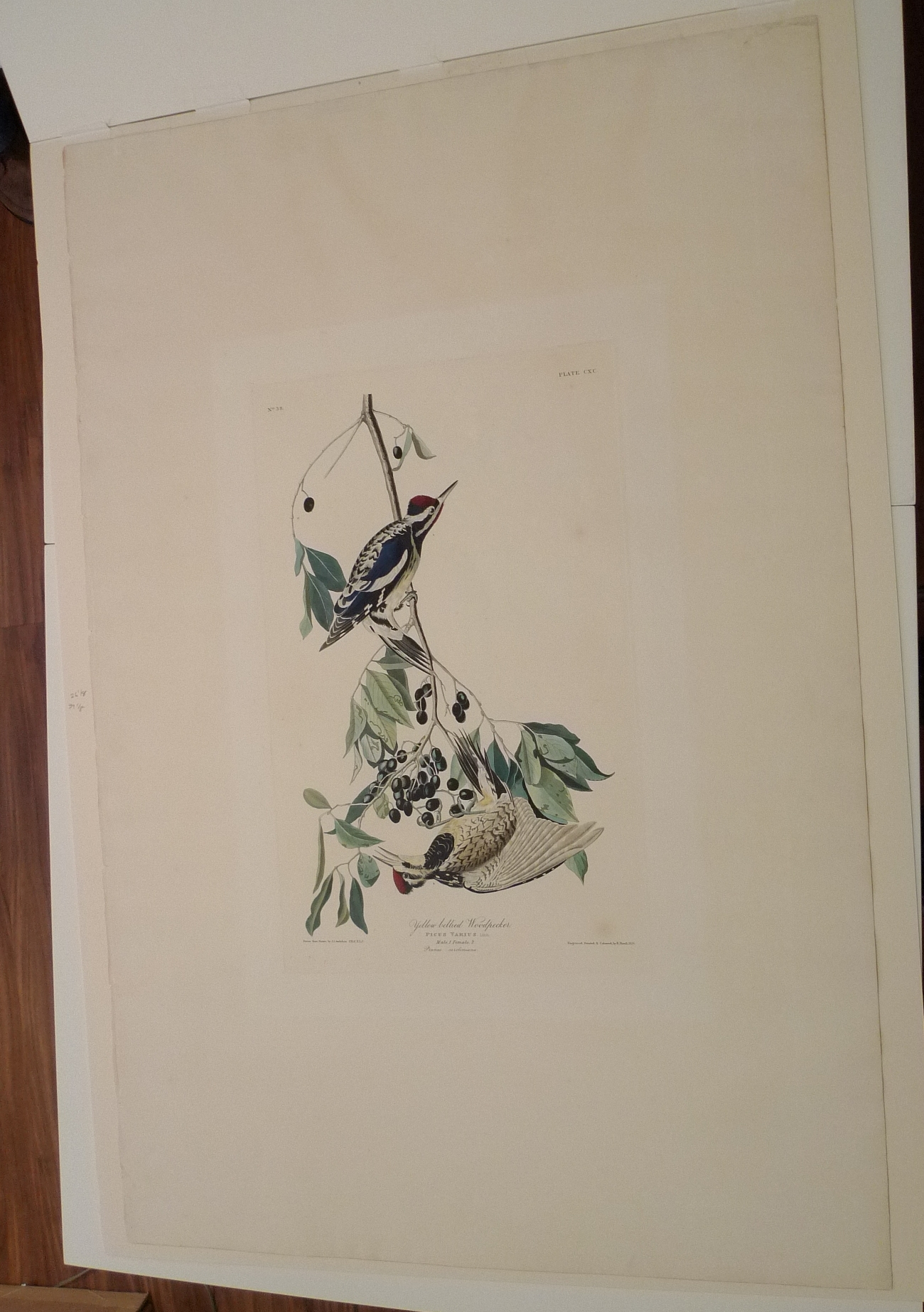
PL 190 Yellow-bellied Woodpecker is owned by a consignor. It is a full sheet (around 38 x 25 inches). I do not have the exact dimensions in my records, I will provide when print is removed from frame. The print is in very good condition with watermark J Whatman 1836. It has some toning including some diffuse stains in the image area and an area of whiter paper extending from about the plate mark to 1-2 inches beyond. (See photo.)
The print was acquired by the consignor from a reputable antique print dealer in trade for a map. It is an attractive print, but the original painting of the crests on the birds seems to have been anomalous. The photo below shows the image area of the print as it was when he purchased it.
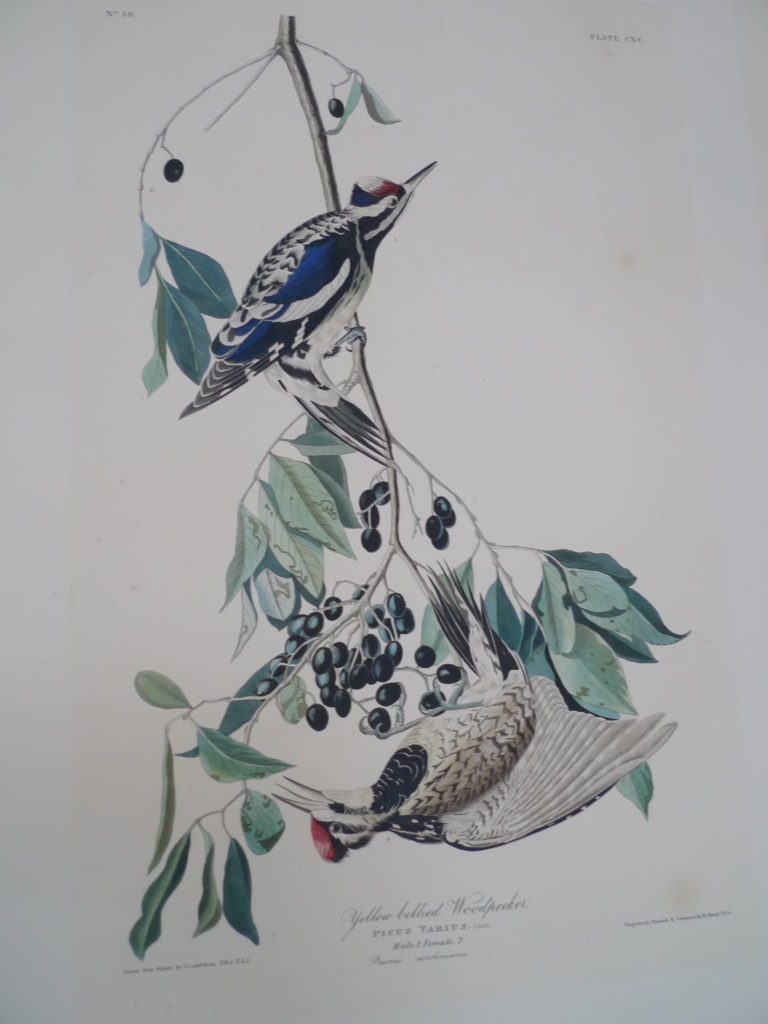
The owner is not a birder, so he did not realize that the crest on the birds was not accurately painted until he was consigning the print to me, and we compared it to other copies. The owner subsequently decided to have these areas of color touched up by a conservator who did a very good job. It looks fine now, but the print’s color is thus not 100 percent original. The conservator added red to the crowns of the birds, and also added a very pale yellow to the belly area of the birds. This yellow, being very pale, often fades away from the print if it is exposed to light. It is a subtle enhancement as can be seen below.
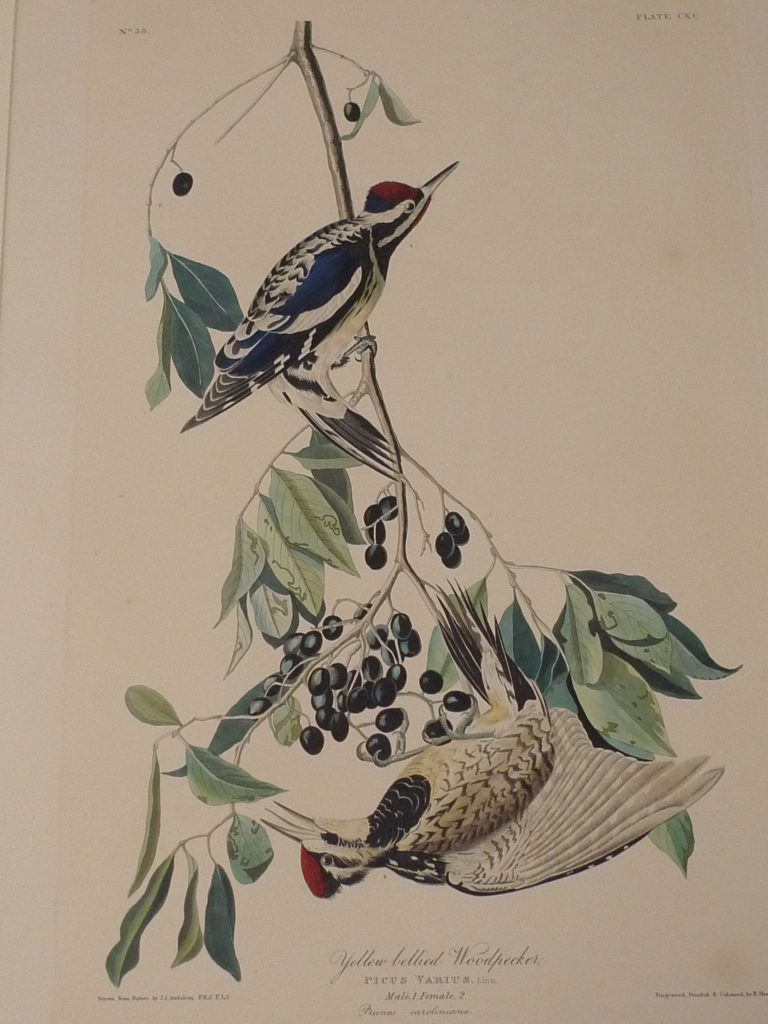
It is impossible to guess the cause of the missing color. Having seen it in photos and in person, it does not seem to be a case of fading, but perhaps the result of an error by one of the original colorists that was never corrected. (Generally, such errors were supposed to be corrected by a “finisher” who reviewed and approved the work.)
Other than the addition of some red and yellow, the print has some minor irregularities on the margins (very small chips, backed crease in the upper right corner) and a somewhat unusual pattern of toning that could be related to past matting and light exposure. Whatman paper is sensitive to light and you often see differential paper tones depending on whether the paper was exposed to light or not. Sometimes the paper lightens in the image area (giving the impression of mat stain even when there is none), and sometimes the paper darkens. In this case, the pattern is difficult to interpret and may be due to more than one reason. There are also some pale diffused stains in the image area, which can be easily seen in the photos.

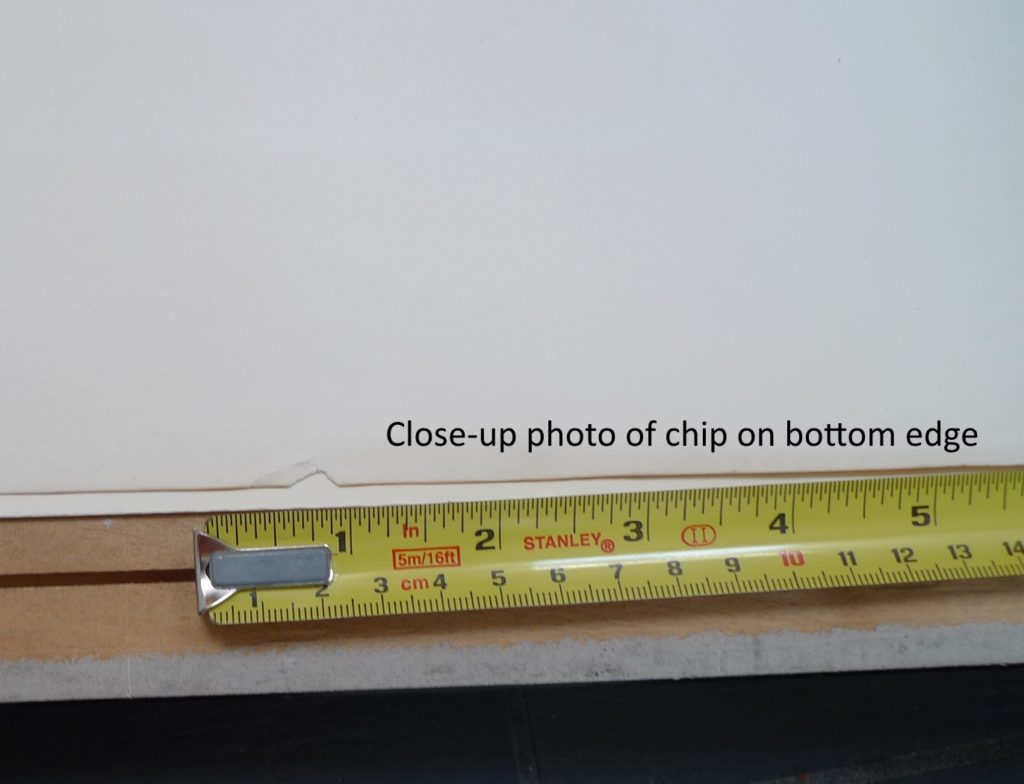
The photo below shows the crease in the top right corner, plus a piece of tape where the print has been hinged into its current mat.
\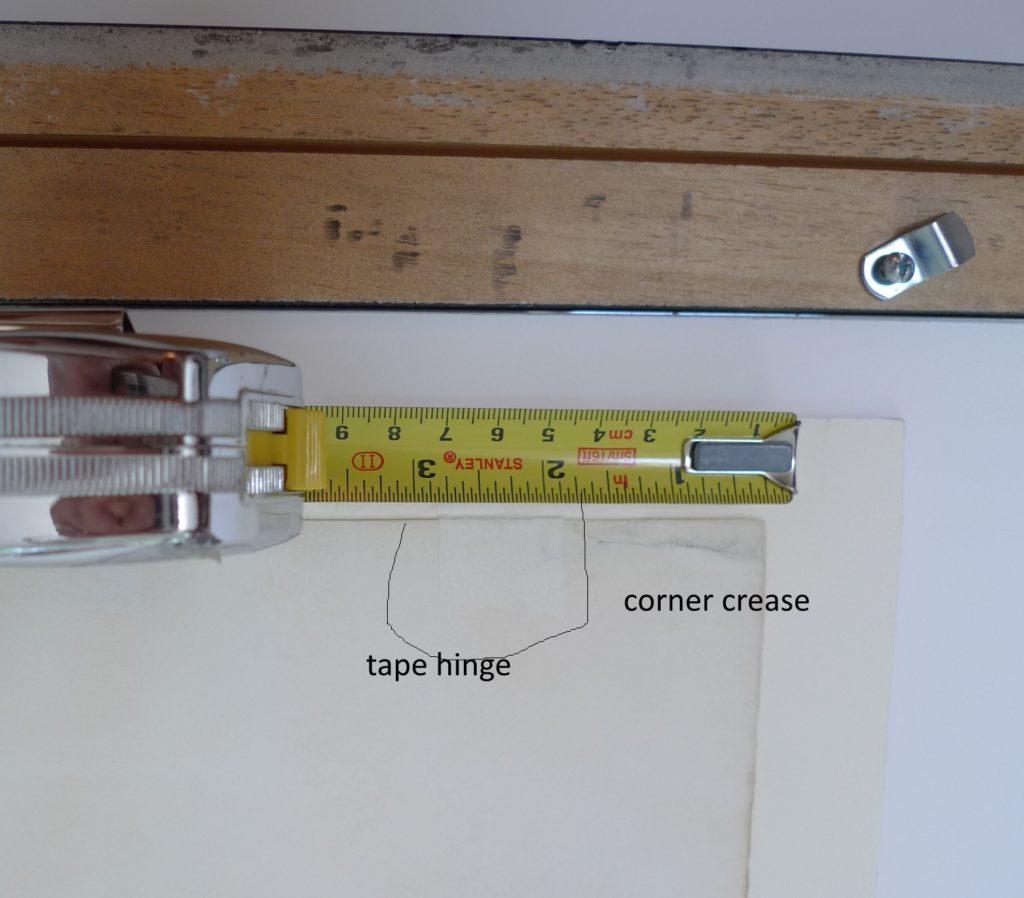
The photo below shows extremely minor irregularities on another edge (location unidentified in photo). This is the sort of thing you can see on any old piece of paper. It is not really significant in any way, but helps you understand what you will tend to see with old and large prints.

Below is a photo of the print as it is currently matted. Image area looks good but you can still see some yellowing of the paper in the area within the plate mark.
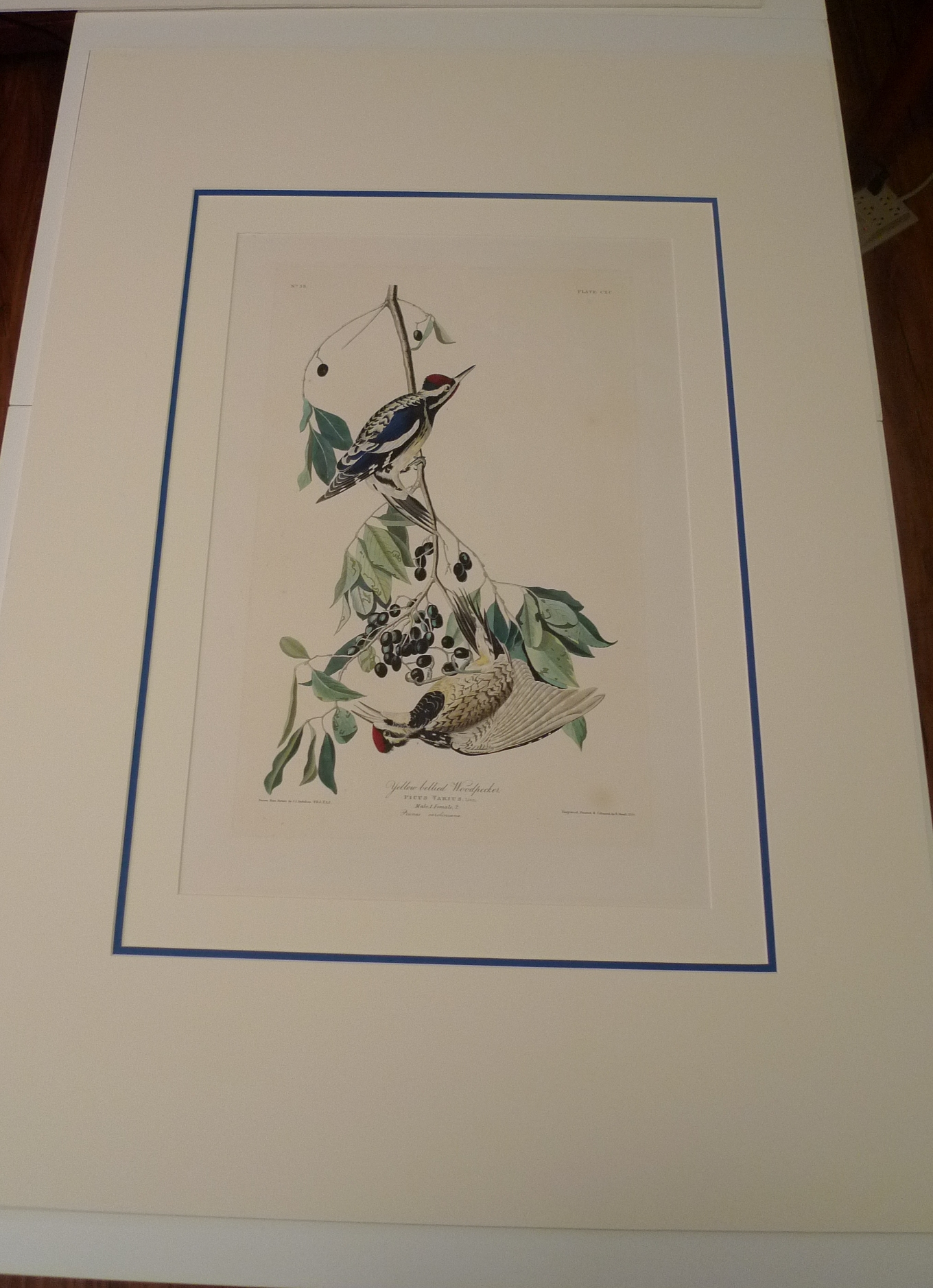


Recent Comments